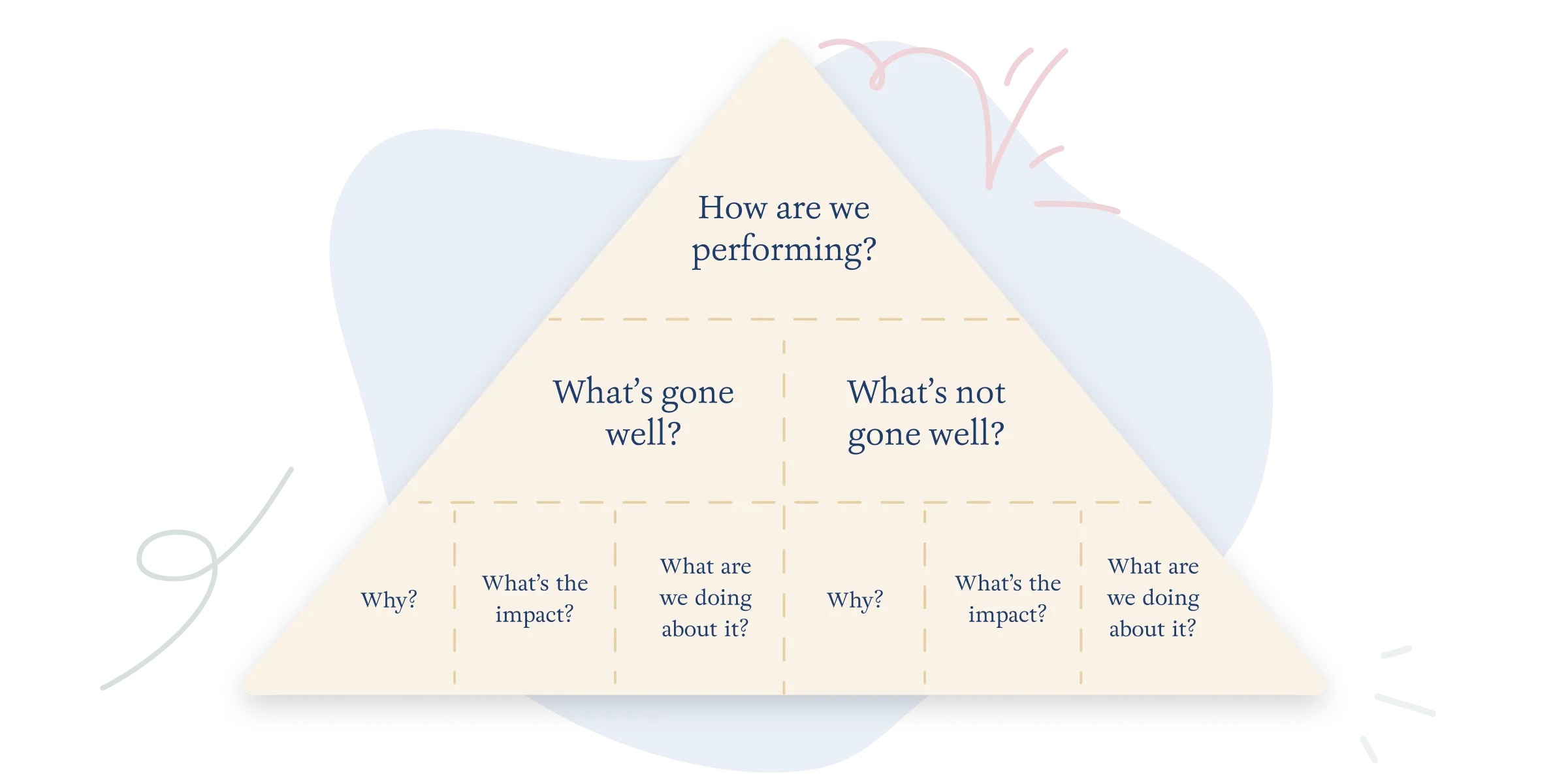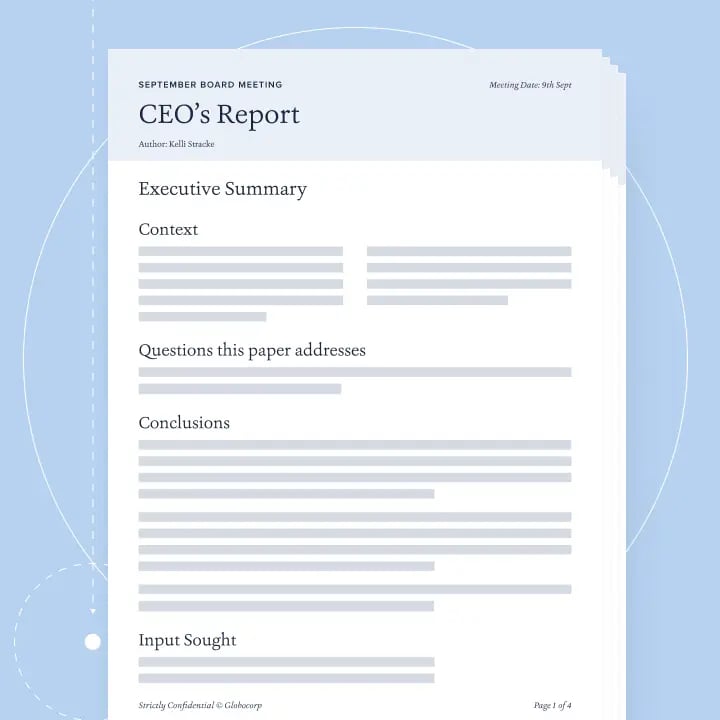This article is part of a series exploring critical thinking in business.
Half-baked thinking is a recipe for disaster. When there are gaps in your logic you expose yourself, and your business, to avoidable blindspots, errors, and misjudgements.
Not only does this cost money — we know of one insurance company that spent $1 billion on an underwriting policy it didn’t need, because no one asked whether they already had one — it can also slow you down. Another financial services firm we know missed out on an important strategic acquisition because the directors weren’t satisfied that they had the full picture. Management were still pulling together the additional information directors had asked for when the exclusivity period expired.
The people involved were not stupid, recklessly hasty, or outliers. They just weren’t thinking deeply enough about the matters at hand, something even the most intelligent and experienced among us struggle to do all of the time. That’s why only one in ten business leaders say they have the quality of thinking they need or would like throughout their organisation, according to data gathered from Board Intelligence’s Agility Friction Test.
Superficial thinking happens when you’re not deliberate about the questions you ask. When you don’t take an intentional, considered approach to your topic, it’s easy to miss the obvious questions and skip steps in the logic. And you’re more likely to dismiss inconvenient facts or fall victim to bias and groupthink.
So, how do you avoid these pitfalls? How do you do the deep and detailed thinking that’s required to surface actionable insights and craft robust plans? And how can you make sure that everyone around you is doing it too?
What is robust thinking, and how do you do it?
Robust thinking means leaving no stone unturned — making sure you’ve asked all the relevant questions and that you’ve probed beneath the surface of the answers to reach a deeper understanding of the topic at hand. In business, this means thinking about performance, plans, problems, and opportunities in a structured and deliberate way.
In our 15 years helping boards and leadership teams to get better at this, we’ve learned that there are two things you need to do. First, you need to get the thinking out of your head. Then you need to give it some scaffolding.
Step 1: get the thinking out of your head
When there’s thinking to be done, there’s usually a report, a slide deck, or an email at the other end of it. Most of the time, it’s because someone has asked for it, or we need it to secure the support required to act on that thinking. But the output’s real value often goes unseen: it’s an opportunity to help you think better, too.
Because it’s often only after we’ve externalised our thinking that we truly understand what we are trying to say. And it’s only when it’s mapped out in front of us that we can see the gaps in it.
Richard Feynman, the Nobel Prize-winning physicist, made clear why. He took pride in being able to explain profound ideas in simple ways. In the book Feynman’s Lost Lecture, his former colleague David L. Goodstein retells the story of how one of his most famous lectures came into being:
“Once, I said to him, ‘Dick, explain to me, so that I can understand it, why spin one-half particles obey Fermi-Dirac statistics.’ Sizing up his audience perfectly, Feynman said, ‘I’ll prepare a freshman lecture on it.’ But he came back a few days later to say, ‘I couldn’t do it. I couldn’t reduce it to the freshman level. That means we don’t really understand it.’”
Feynman had hit the nail on the head. When we try to get our thinking down on paper, or discuss it with someone, we start to scrutinise, sharpen, develop, and complete it. Or we realise that we can’t.
You don’t strictly need other people, or a report or presentation, to help you do this. As visitors to our office will have noticed, we’ve found rubber ducks do a great job. Rubber-ducking is common practice in tech companies like ours. When debugging code, you find an inanimate object like a rubber duck, plonk it on the desk next to you and explain to it what the problem is. The duck stays schtum, but by getting your thinking out of your head, you can hold it up to inspection and ask yourself the hard questions that are necessary for you to properly understand it.
In this spirit, preparing a report or presentation for a set-piece activity like a management or board meeting is a golden opportunity to get your thinking out of your head and get it straight. As you refine your output, you refine your thinking. It gets stronger with every draft.
Step 2: give your thinking some scaffolding
When you’ve got your thinking out of your head, you can start to organise it. That means putting it into a structure that helps you see the gaps — like a pyramid.
Start by identifying your central question — the one that all of your thinking on the topic should support. Think of it as the apex of the pyramid. That question naturally leads to multiple follow-on questions, which take you further into the detail. Think of those questions as the building blocks that form the second layer of your pyramid. Those follow-on questions usually lead to further questions, which are the building blocks of the next layer of the pyramid, and so on. When your questions are arranged like this, they form a structurally stable shape.
Say, for example, you want to probe your team’s recent performance. You could build a pyramid that looked something like this:

This example looks at the question through just one dimension — positive (“What’s gone well?”) versus negative (“What’s not gone well?”). You could add many more layers to deepen your understanding of performance. You could use an internal lens (“How are we performing against our goals?”) versus an external one (“How are we performing against the market?”). Or you could look at different measures of performance, such as financial or non-financial performance.
However wide or deep you go, arranging your questions into a structure like this helps to expose gaps in your thinking because you can easily visualise where the logic breaks down. You can see if there are missing layers or building blocks that make the pyramid too flat or lop-sided. This will tell you that you’ve missed a question that might be important, or that you might be focusing too heavily on one aspect of the problem.
Following the example above, if you focused on the positives and didn’t go deep enough into what hadn’t gone so well, you might not spot an emerging risk, a new competitor, or a supply chain issue that could threaten future performance.
This might sound simple, but our research with The Chartered Governance Institute UK & Ireland has revealed that few of the reports that boards use to inform their discussions achieve this balance. Between 2020 and 2023, more than half of the directors and governance professionals we surveyed said their board reports were too introspective, failing to take the external perspective into account. And nearly two-thirds thought the information was too operational at the expense of the strategic view.
The good news is that, by adopting this approach, you can put the right scaffolding in place. When you do this, you can be confident that your thinking is strong — because you know you’ve covered all the bases and left no stone unturned in the pursuit of actionable insights, ideas, and plans.
Former McKinsey consultant Barbara Minto’s 1973 classic, “The Pyramid Principle”, is worth a read if you want to explore pyramid thinking in more detail.
How do you get everybody else thinking robustly?
To get everyone in the organisation thinking in this way you need to give them a helping hand to do it well. At the same time, you need to make it harder for people to default to the superficial thinking that leads to poor decisions.
Our board and management reporting platform Lucia is designed to guide and gently nudge report writers to do just that, at every level of the organisation.
It reminds you of the questions that you may have forgotten to ask. You can build them into templates — pre-loaded sets of questions that you apply to routine reports, such as performance reviews or business cases.
And, powered by AI, Lucia can identify where there are imbalances in what you’ve written. If you’re spending too much time looking backwards and not focusing enough on what’s coming, or if you talk about the upsides of a proposal far more than the downsides, Lucia will let you know.
No platform or software can do your thinking for you, but Lucia can make it easier for you to see where you’ve missed things out, so you can fill in the gaps before they become blindspots.
And it can help you turn robust thinking into an organisation-wide habit because everyone’s doing it regularly — every time they write a management or board report. Over time, they develop the muscle memory that makes it the default, getting everyone’s brains working harder to produce better insights, plans, and proposals.

A thinking and writing platform that helps you to write brilliantly clever and beautiful reports that surface breakthrough insights and spur your business to action.
Find out more


